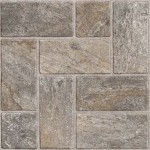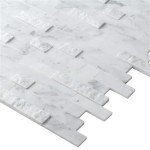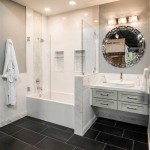Matching Floor and Wall Bathroom Tiles: Achieving Cohesive Design
The bathroom, often a smaller space within a home, presents a unique opportunity for design expression. Selecting the right combination of floor and wall tiles is paramount in creating a functional and aesthetically pleasing environment. A well-coordinated tile scheme can enhance the perceived size of the bathroom, contribute to a sense of cleanliness and tranquility, and reflect the homeowner’s personal style. This article explores the principles behind matching floor and wall bathroom tiles, examining various approaches to achieve a cohesive and visually appealing design.
When considering floor and wall tile pairings, several factors require careful evaluation. These include the size and layout of the bathroom, the desired aesthetic, the level of maintenance required, and budget constraints. A consistent approach to design, carefully considering these elements, will result in a bathroom that is both stylish and practical.
Understanding Tile Types and Materials
Before embarking on the tile selection process, it is crucial to understand the different types of tiles available and their respective properties. Common materials include ceramic, porcelain, natural stone, and glass, each offering unique benefits and drawbacks regarding durability, water resistance, slip resistance, and aesthetic appeal.
Ceramic tiles are a popular choice due to their affordability, versatility, and ease of maintenance. They are available in a wide range of colors, patterns, and sizes, making them suitable for various design styles. However, ceramic is less dense than porcelain and may be more prone to chipping or cracking under heavy impact.
Porcelain tiles are known for their superior durability and water resistance, making them an excellent option for bathroom floors and walls. They are manufactured through a high-temperature firing process, resulting in a dense and non-porous material that is resistant to stains, scratches, and moisture. Porcelain tiles are often chosen for high-traffic areas and bathrooms with heavy water usage.
Natural stone tiles, such as marble, granite, and slate, offer a luxurious and timeless aesthetic. Each stone tile is unique in its veining and coloration, adding character and sophistication to the bathroom. However, natural stone requires regular sealing to prevent staining and moisture absorption. It is also generally more expensive than ceramic or porcelain tiles.
Glass tiles are primarily used for accent walls or decorative features. They offer a vibrant and reflective surface that can add depth and visual interest to the bathroom. Glass tiles are non-porous and easy to clean, but they may be more susceptible to scratches than other tile materials. They are also typically more expensive and require professional installation.
The choice of tile material should be guided by the specific requirements of the bathroom, considering factors such as budget, durability, and desired aesthetic.
Strategies for Achieving Cohesive Tile Design
Several strategies can be employed to achieve a cohesive and visually appealing tile design in the bathroom. These include using the same tile for both floor and walls, selecting complementary colors and patterns, and incorporating accent tiles to add visual interest. Each approach offers unique advantages and considerations.
Using the same tile for both floor and walls creates a seamless and unified look. This approach is particularly effective in smaller bathrooms, as it can help to visually expand the space. When using the same tile, it is important to ensure that the chosen material is suitable for both floor and wall applications, particularly regarding slip resistance. Matte or textured finishes are generally preferred for flooring to provide adequate traction.
Selecting complementary colors and patterns is another effective way to achieve a cohesive tile design. This involves choosing tiles that share a common color palette or pattern family, creating a harmonious and balanced look. For example, a light gray floor tile could be paired with a slightly darker gray wall tile, or a patterned floor tile could be complemented by a plain wall tile in a coordinating color. The key is to create a subtle contrast that adds visual interest without overwhelming the space.
Incorporating accent tiles can add visual interest and personality to the bathroom. Accent tiles can be used to create a border, a feature wall, or a decorative mosaic pattern. They can also be used to highlight specific areas of the bathroom, such as the shower or vanity. When using accent tiles, it is important to carefully consider their color, pattern, and size in relation to the surrounding tiles. Accent tiles should complement the overall design scheme without overpowering it.
Using different tile sizes within the same color scheme can also create visual interest. Coordinating large format tiles on the floor with smaller tiles on the walls, or vice versa, can create a subtle yet sophisticated effect. This approach can also help to define different zones within the bathroom, such as the shower area or the vanity area.
Considerations for Bathroom Size and Layout
The size and layout of the bathroom play a significant role in determining the most appropriate tile design. Smaller bathrooms benefit from lighter colors and larger tiles, which can help to create a sense of spaciousness. Larger bathrooms can accommodate darker colors and smaller tiles, allowing for more intricate patterns and designs.
In small bathrooms, it is generally advisable to use light-colored tiles on both the floor and walls. Light colors reflect light, making the space feel brighter and more open. Larger tiles can also help to create the illusion of space, as they reduce the number of grout lines, which can visually clutter the room. Consider using a consistent grout color that blends with the tile to further minimize visual distractions.
In larger bathrooms, there is more freedom to experiment with different colors, patterns, and tile sizes. Darker colors can be used to create a more dramatic and intimate atmosphere. Smaller tiles can be used to create intricate patterns and designs, adding visual interest to the space. Consider using different tile colors and textures to define different zones within the bathroom, such as the shower area or the vanity area.
The layout of the bathroom also needs to be considered when selecting tiles. In bathrooms with awkward angles or unusual shapes, it may be necessary to use smaller tiles to accommodate the irregular spaces. In bathrooms with a focal point, such as a freestanding bathtub or a large window, the tile design should complement and enhance the feature.
The placement of fixtures, such as the toilet, sink, and shower, should also be taken into account when planning the tile layout. Avoid placing small or intricate tile patterns behind large fixtures, as they may be obscured. Consider using a simpler tile design in these areas to create a clean and uncluttered look.
Ultimately, the best tile design for a bathroom will depend on its unique characteristics and the homeowner’s personal preferences. By carefully considering the factors outlined in this article, it is possible to create a bathroom that is both functional and aesthetically pleasing.
The grout color also plays a vital role in the overall aesthetic. Grout that closely matches the tile color will create a more seamless and uniform look, while contrasting grout can highlight the shape and pattern of the tiles. Dark grout can be practical for floors as it hides dirt and stains more effectively than light grout.
Finally, consider the lighting in the bathroom. Natural light will affect the appearance of the tiles, as will artificial lighting. Ensure that the chosen tiles look good under both natural and artificial light conditions. It is recommended to obtain samples of the tiles and view them in the bathroom under different lighting conditions before making a final decision.

Tiles Talk Mix And Match 6 Ways To Achieve Bathroom Bliss Perini

Design Tips For Matching Ceramic And Vinyl Floor Wall Tiles Builddirect Blog

Matching Tiles Tips And Suggestions For Pairing Porcelanosa

Tiles Talk Mix And Match 6 Ways To Achieve Bathroom Bliss Perini

20 Matching Floor And Wall Tiles In Bathroom Decoomo

Bathroom Tile Idea Use The Same On Floors And Walls

Tile Shower Floor Or Walls Maximizing Aesthetics With Bathroom Ceramics Solution

40 Free Shower Tile Ideas Tips For Choosing Why

Design Tips For Matching Ceramic And Vinyl Floor Wall Tiles Builddirect Blog

141 Mix And Match Tile Ideas In Bathrooms Digsdigs








